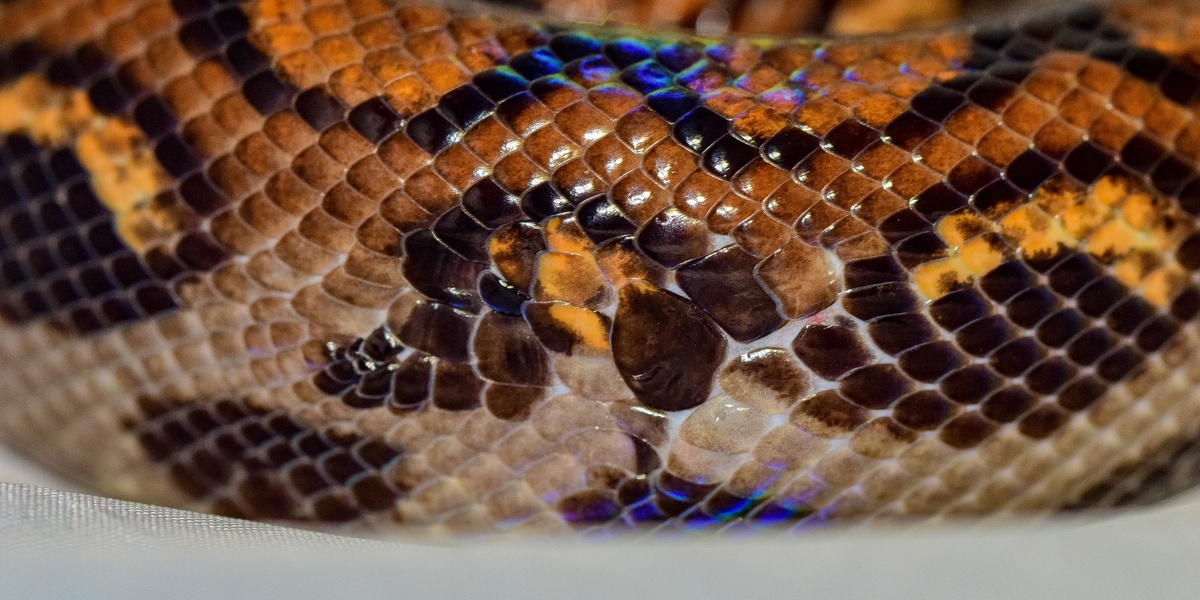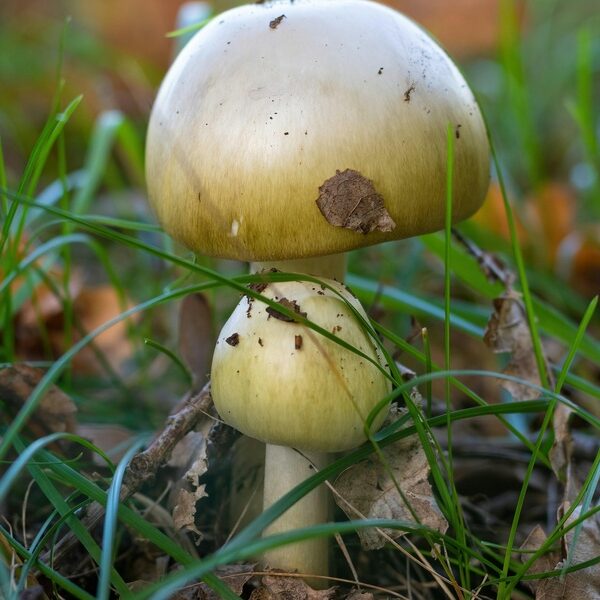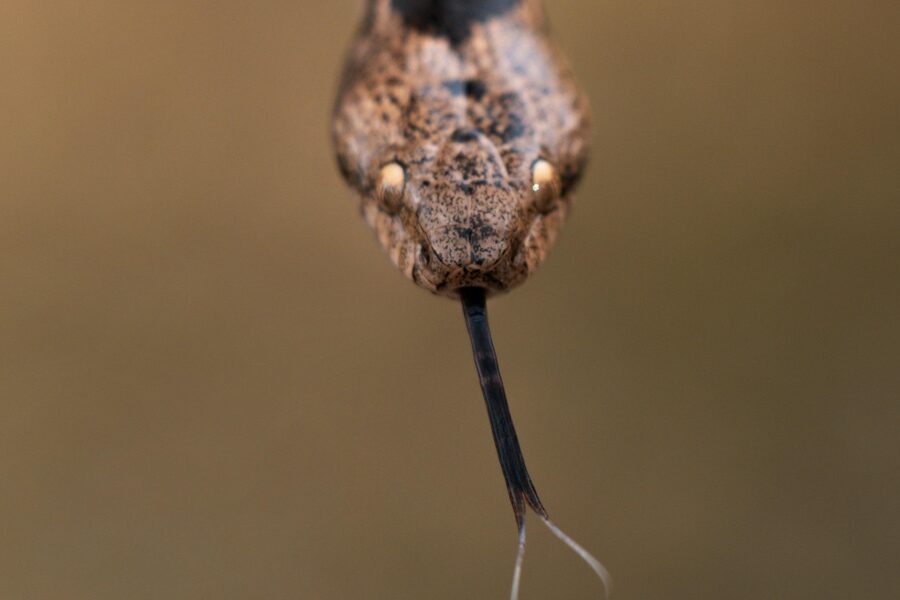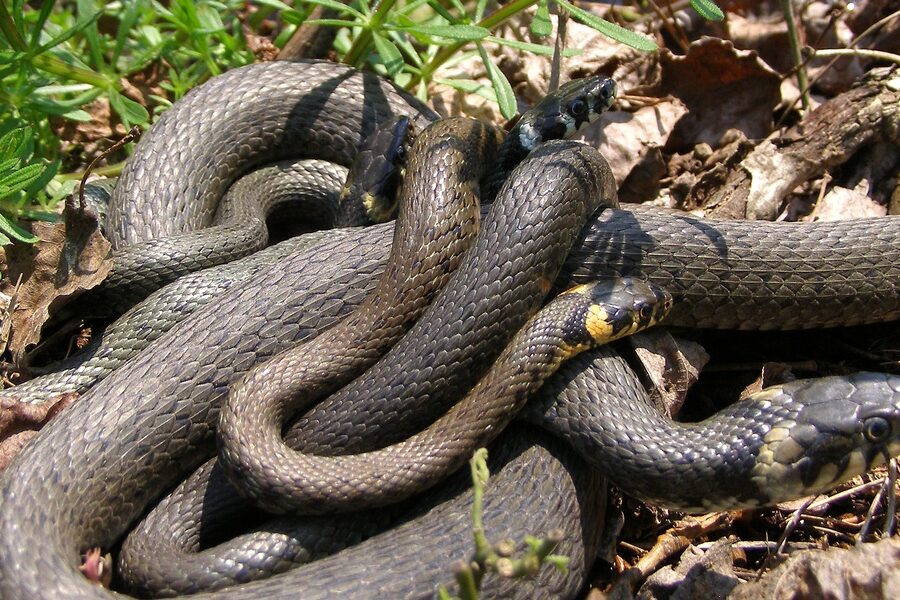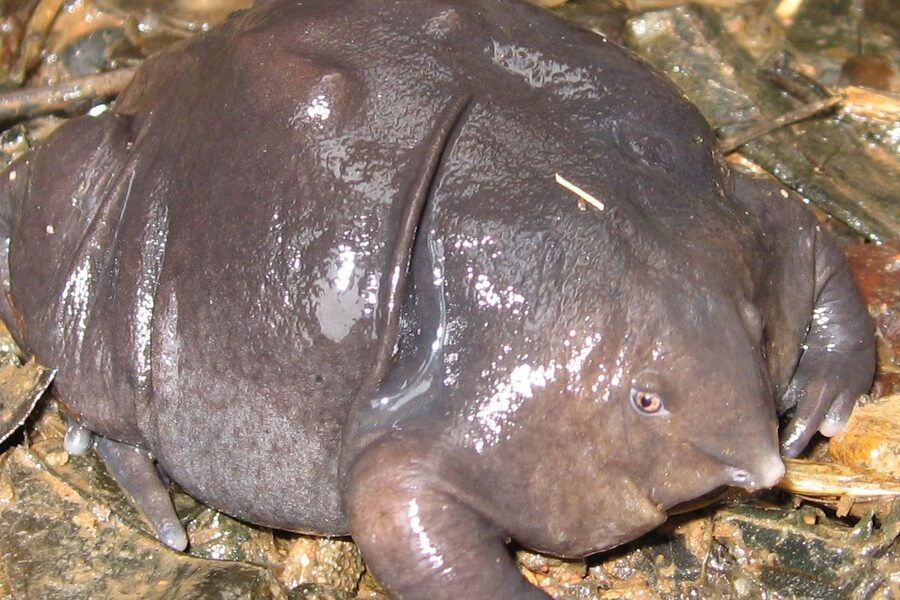From tropical forests to suburban gardens, snakes bring sudden flashes of color that catch the eye and hint at ecological roles from camouflage to warning signals. Noting where and how a pattern appears can help you recognize species and understand their habits.
There are 25 colorful snakes, ranging from Asiatic Vine Snake to Wild Corn Snake. For each species we list Scientific name,Primary colors,Range (countries/regions) so you can compare identification and distribution — see the full list you’ll find below.
How can I tell if a colorful snake is venomous?
Color and pattern aren’t reliable indicators on their own; many nonvenomous species mimic venomous ones. Use a combination of features (behavior, head shape, habitat) and consult the Scientific name and range in the list below or local field guides. If you encounter an unfamiliar snake, keep a safe distance and contact local wildlife authorities or a herpetologist rather than handling it.
Are any of these colorful snakes suitable as pets?
Some species commonly kept in captivity (for example, corn snakes) do well when captive-bred and cared for properly, but many colorful species have specific needs or are protected. Never take wild animals; check local regulations, buy from reputable breeders, and ensure you can meet husbandry, space and veterinary requirements.
Colorful Snakes
| Common name | Scientific name | Primary colors | Range (countries/regions) |
|---|---|---|---|
| San Francisco Garter Snake | Thamnophis sirtalis tetrataenia | Turquoise belly, black and red-orange stripes, bold pattern. | San Francisco Peninsula, California, USA. |
| Emerald Tree Boa | Corallus caninus | Vivid emerald green, white dorsal ‘lightning bolt’ markings. | Amazon rainforest of South America (Brazil, Colombia, Peru, etc.). |
| Green Tree Python | Morelia viridis | Bright lime or emerald green, sometimes with yellow or blue spots. | New Guinea, surrounding islands, and Cape York Peninsula, Australia. |
| Brazilian Rainbow Boa | Epicrates cenchria | Orange to red-brown with black rings, highly iridescent rainbow sheen. | Central and South America, primarily the Amazon Basin. |
| Eyelash Viper | Bothriechis schlegelii | Bright yellow (‘oropel’), green, brown, pink; solid or mottled. | Central and northern South America. |
| Blue Malayan Coral Snake | Calliophis bivirgatus | Electric blue stripes, red head and tail, black body. | Southeast Asia (Thailand, Malaysia, Indonesia, Singapore). |
| Gaboon Viper | Bitis gabonica | Pink, purple, brown, and tan in a perfect geometric, velvety pattern. | Rainforests and woodlands of sub-Saharan Africa. |
| Sunbeam Snake | Xenopeltis unicolor | Dark brown or black base with an intense, oil-slick-like iridescence. | Southeast Asia and Indonesia. |
| Eastern Coral Snake | Micrurus fulvius | Bright red, yellow, and black bands that encircle the body. | Southeastern United States. |
| Sinaloan Milk Snake | Lampropeltis triangulum sinaloae | Bold red, black, and thin cream or white bands. | Northwestern Mexico (Sinaloa, Sonora, Chihuahua). |
| Variable Bush Viper | Atheris squamigera | Green, yellow, orange, red, blue, or black; solid or mixed. | West and Central African rainforests. |
| Paradise Tree Snake | Chrysopelea paradisi | Green to yellow-green body with black-edged scales and red or orange spots. | Southeast Asia (Thailand, Malaysia, Indonesia, Philippines). |
| Mandarin Ratsnake | Euprepiophis mandarinus | Grey or tan body with a striking yellow and black diamond pattern. | Central and southern China, Southeast Asia. |
| Boelen’s Python | Simalia boeleni | Velvety black with creamy yellow or white bands and an iridescent sheen. | Highlands of New Guinea. |
| Mangrove Snake | Boiga dendrophila | Jet black body with brilliant yellow bands or crossbars. | Southeast Asia. |
| Red-tailed Green Ratsnake | Gonyosoma oxycephalum | Uniformly bright green body, often with a rusty orange or red tail. | Southeast Asia. |
| Green Mamba | Dendroaspis viridis | Brilliant, uniform grass-green with some yellow-edged scales. | Coastal regions of West Africa. |
| Wagler’s Pit Viper | Tropidolaemus wagleri | Green and black with yellow or white crossbands; sexually dimorphic. | Southeast Asia. |
| Long-nosed Snake | Rhinocheilus lecontei | Black and cream or yellow bands, with red or orange patches. | Southwestern United States and Northern Mexico. |
| Banded Krait | Bungarus fasciatus | Stark, alternating bands of bright yellow and jet black. | Indian subcontinent and Southeast Asia. |
| Radiated Ratsnake | Coelognathus radiatus | Tan or yellow-brown body with black lines radiating from the eye. | South and Southeast Asia. |
| Scarlet Kingsnake | Lampropeltis elapsoides | Red, black, and yellow rings; mimics the Eastern Coral Snake. | Southeastern United States. |
| Asiatic Vine Snake | Ahaetulla prasina | Long, slender, whip-like body in bright fluorescent green or tan. | South and Southeast Asia. |
| Red Spitting Cobra | Naja pallida | Striking salmon-red, orange, or pinkish body with a black throat band. | East Africa. |
| Wild Corn Snake | Pantherophis guttatus | Orange or reddish-brown with large, black-bordered red blotches on the back. | Southeastern and central United States. |
Images and Descriptions
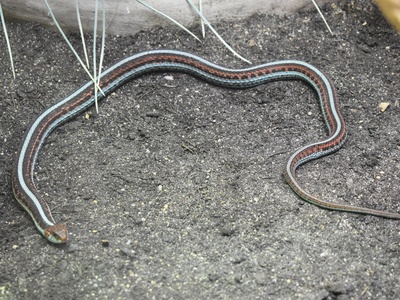
San Francisco Garter Snake
This rare, slender snake reaches 2-3 feet. Its stunning red, black, and turquoise stripes make it one of North America’s most beautiful snakes. It lives near ponds and marshes and is mildly venomous, but harmless to humans.
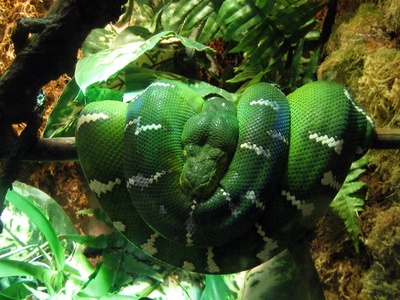
Emerald Tree Boa
A non-venomous arboreal boa reaching 6 feet. Famous for its brilliant emerald green color broken by white dorsal markings. It spends its life coiled on branches, ambushing prey like small mammals and birds in the Amazon rainforest canopy.
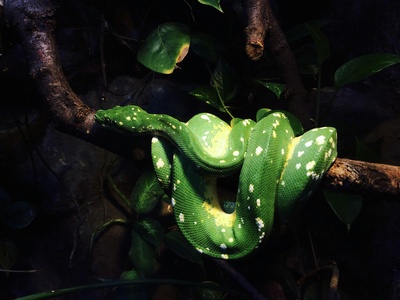
Green Tree Python
This non-venomous python is famous for its vibrant green coloration, which helps it camouflage in rainforest canopies. Growing to about 5 feet, it looks strikingly similar to the Emerald Tree Boa due to convergent evolution, hunting from tree branches.
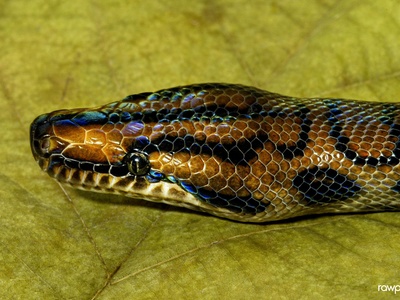
Brazilian Rainbow Boa
This non-venomous boa is famed for its spectacular iridescence, shimmering with rainbow colors under light. Typically 4-6 feet long, its base color is reddish-brown with dark rings. It is a terrestrial snake living in humid forests.
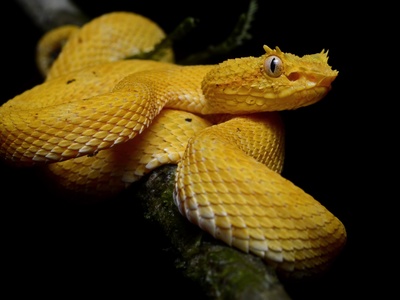
Eyelash Viper
A small, venomous pit viper named for the unique scales above its eyes. It’s famous for its vibrant color variations, especially the brilliant ‘oropel’ yellow. This arboreal snake waits patiently in foliage, typically under 30 inches long.

Blue Malayan Coral Snake
One of the world’s most striking snakes, with electric blue stripes and a fiery red head and tail. This dangerously venomous elapid grows up to 6 feet and preys on other snakes in the forest floor leaf litter.

Gaboon Viper
A large, heavy-bodied viper with the longest fangs of any snake. Its stunning pattern of pink, purple, and brown rectangles and triangles provides excellent camouflage on the forest floor. It is dangerously venomous and an ambush predator.
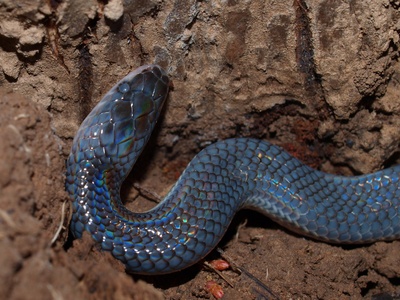
Sunbeam Snake
A non-venomous, burrowing snake that appears plain brown or black until light reveals its breathtaking iridescence. Its smooth scales refract light into a rainbow of colors. Typically around 3 feet long, it lives in loose soil and preys on frogs and lizards.

Eastern Coral Snake
A highly venomous snake famous for its vibrant warning colors. Its pattern of red and yellow bands touching distinguishes it from non-venomous mimics. This slender, secretive snake grows to about 2-3 feet and lives in forests and sandy areas.

Sinaloan Milk Snake
A non-venomous kingsnake subspecies and a classic coral snake mimic. It features wide red bands separated by thinner black and cream-colored rings. Growing up to 4 feet, this harmless snake is known for its docile nature and striking colors.
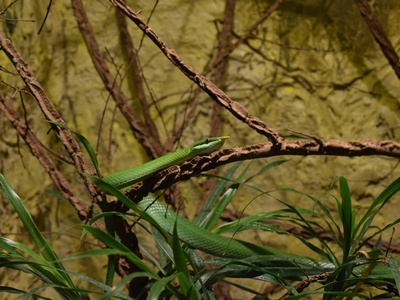
Variable Bush Viper
A small, venomous, and arboreal viper with strongly keeled scales giving it a “bristly” look. Its coloration is incredibly variable, with individuals being bright green, yellow, red, or even black. It hunts small prey from low-lying vegetation.
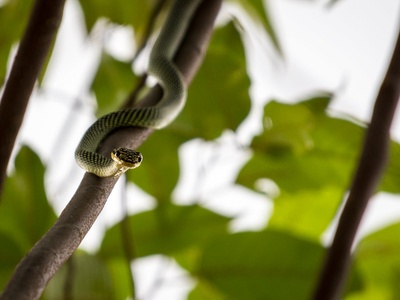
Paradise Tree Snake
Also known as the paradise flying snake, this mildly venomous species is famous for its ability to glide between trees. Its body is bright green with black markings and a series of vibrant red or orange spots running down its back.

Mandarin Ratsnake
A secretive, non-venomous snake celebrated for its beautiful and intricate pattern. It has a greyish-brown body adorned with a chain of large, black-bordered yellow diamonds down its back. This burrowing snake lives in cool, moist mountain forests.
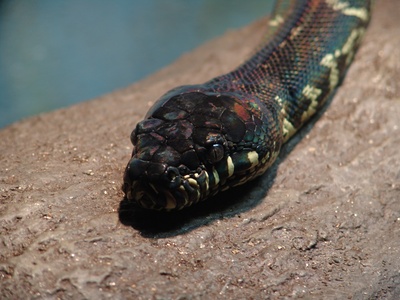
Boelen’s Python
A large, non-venomous python revered for its simple but stunning beauty. Adults are a deep, iridescent black with clean, creamy-white to yellow bands. Living at high altitudes, this rare snake is a powerful constrictor reaching over 8 feet.

Mangrove Snake
A large, semi-aquatic snake known for its dramatic coloration. It has a glossy black body sharply contrasted with bright yellow bands. This mildly venomous, rear-fanged snake can be defensive and often inhabits mangrove swamps and lowland rainforests.
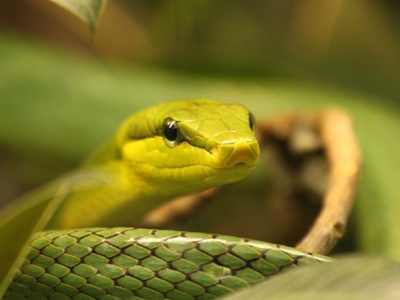
Red-tailed Green Ratsnake
A large, slender, and non-venomous arboreal snake. It is typically a vibrant, uniform green with a distinctive reddish-brown or orange tail. Often displaying a black line around the eye, this fast and agile snake is known for its feisty temperament.
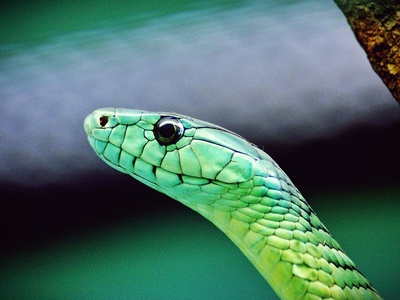
Green Mamba
A highly venomous and arboreal elapid, the Green Mamba is a slender snake with a long, coffin-shaped head. Its smooth scales are a vivid, glossy green, providing perfect camouflage in the trees where it hunts birds and small mammals.
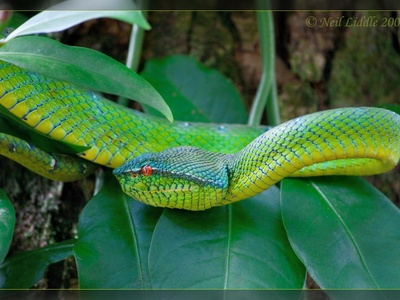
Wagler’s Pit Viper
Also known as the Temple Viper, this venomous snake shows extreme color differences between sexes. Females are large with a complex pattern of black, green, and yellow bands, while males are smaller and bright green. They are ambush predators.
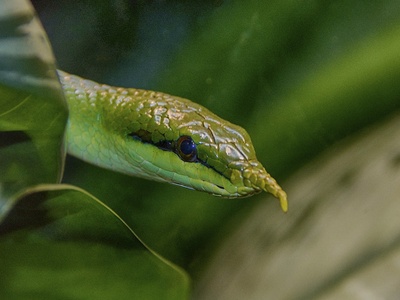
Long-nosed Snake
A non-venomous nocturnal snake named for its pointed, upturned snout. It has a striking pattern of black and yellowish bands, with red pigment often appearing within the light bands. It mimics coral snakes to deter predators.
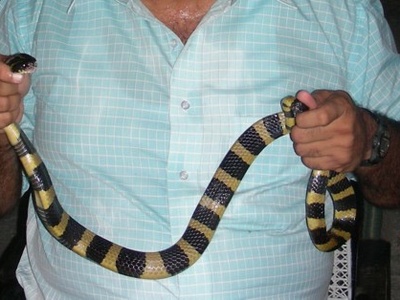
Banded Krait
A highly venomous elapid easily identified by its dramatic, blunt tail and bold yellow-and-black bands. Its triangular body cross-section is also distinctive. This nocturnal snake possesses a potent neurotoxic venom, making it extremely dangerous.

Radiated Ratsnake
Also known as the Copperhead Ratsnake, this non-venomous snake is notable for the black lines that radiate from its eye. The body is typically yellowish-tan with two dark dorsal stripes. When threatened, it can inflate its neck vertically.
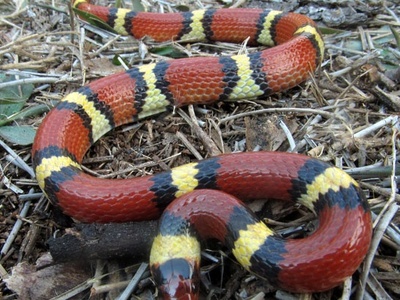
Scarlet Kingsnake
A small, non-venomous kingsnake and a classic coral snake mimic. Its red and black bands are separated by yellow rings (“red on black, venom lack”), a key distinction. This secretive snake is often found in pine forests under logs.
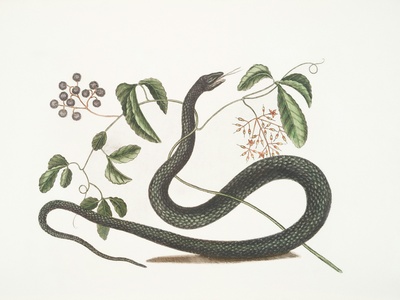
Asiatic Vine Snake
An incredibly slender, arboreal snake with a pointed snout and horizontal pupils. Most are a vibrant green, perfectly camouflaged among vines and leaves. This mildly venomous, rear-fanged snake preys on lizards and frogs, striking with remarkable speed.
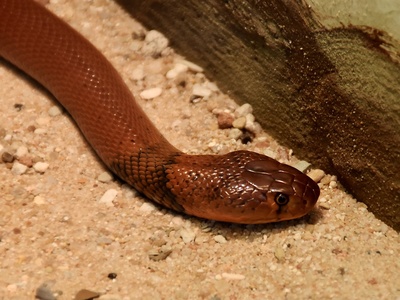
Red Spitting Cobra
A medium-sized cobra famous for its ability to “spit” venom with high accuracy. Its body color is a remarkable shade of red or orange, serving as a clear warning. This highly venomous snake is found in the dry savanna of East Africa.
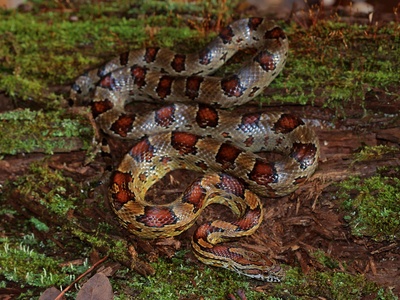
Wild Corn Snake
While famous for captive morphs, the wild form is genuinely colorful. This non-venomous ratsnake has a vibrant orange or reddish base color with large, saddle-like red blotches. An adaptable snake, it’s often found in overgrown fields and forests.
